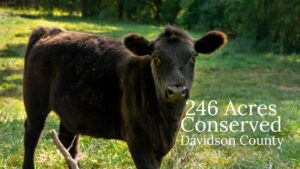
by Crystal Cockman
March 09, 2016
 I went birdwatching at the Pee Dee National Wildlife Refuge a few weekends back, and while there I was fortunate to spot a pair of red-headed woodpeckers (Melanerpes erythrocephalus). They are a striking bird, with bright-red heads, and black and white bodies and wings. Males and females are monomorphic, which means they have the same coloration, and it is very hard to distinguish male from female. They are a medium-sized woodpecker found in North America and Canada, ranging from the Rocky Mountains to the Atlantic Ocean, and from southern Ontario to Florida.
I went birdwatching at the Pee Dee National Wildlife Refuge a few weekends back, and while there I was fortunate to spot a pair of red-headed woodpeckers (Melanerpes erythrocephalus). They are a striking bird, with bright-red heads, and black and white bodies and wings. Males and females are monomorphic, which means they have the same coloration, and it is very hard to distinguish male from female. They are a medium-sized woodpecker found in North America and Canada, ranging from the Rocky Mountains to the Atlantic Ocean, and from southern Ontario to Florida.
Red-headed woodpeckers are omnivorous and have a diverse diet. Unlike many other woodpeckers, they can catch insects in flight. They are also known to forage on the ground. In addition to insects, they eat seeds, fruits, nuts, earthworms, and occasionally the eggs or fledglings of other birds, small rodents, and even bark. They are known to store acorns and other nuts in the fall in holes and crevices of trees to feed upon when winter comes. Few birds are known to store food as such.
While most birds either have a permanent territory in which they live or follow a North-South migration, the migration of red-headed woodpeckers is harder to predict and understand. In the northern part of their range they are present during breeding season and leave, whereas in the southern part of their range they can be seen year-round. They also move east-west, thought to be a result of following food sources.
Red-headed woodpeckers lay eggs between April and July and typically lay 3 to 10 eggs. Both the male and female incubate the eggs, which lasts for approximately two weeks. Fledglings are altricial, which means they are hatched in an undeveloped state (without feathers and with eyes closed) and require care and feeding by their parents. Chicks are ready to leave the nest approximately one month after hatching. Red-headed woodpeckers may raise two broods in a year, and they may even begin laying eggs for the second brood while still raising the first brood.
Red-headed woodpeckers live in forests with open understories, edges of forests, orchards, and even parks. They were once common throughout the east, but populations have been declining in recent years. One of the reasons considered most responsible for this decline is the cutting of dead trees or snags where they nest. Like other woodpeckers and many other birds in general, they raise their young in a cavity. They require dead wood in which to excavate the cavity, which is typically only around for a short time. Competition with other species, such as European starlings for these nest cavities is one other plausible reason for their decline. Red-headed woodpeckers are now threatened in several states.